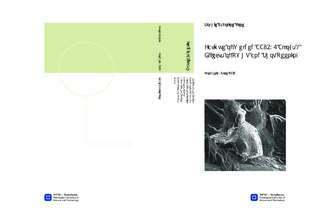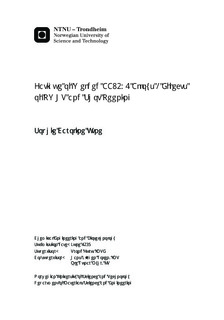| dc.description.abstract | Aluminum is a metal widely used in areas such as a construction material in buildings, transportation,oil and gas industry, in packaging for preserving food and drink, electric cables, heatexchangers and many other areas. The wide area of use is due to aluminum being a relatively lightmetal (1/3 of the weight of steel), has relatively high strength, good formability, high corrosionresistance, is a good conductor of heat and electricity, has good reflectivity, and can be recycledover and over again. The latter lowers the CO2 footprint and the energy consumption substantially.This master?s thesis is very relevant to the oil and gas industry, transportation industry (car,ship, train, etc.) and to other industries involving the use of metal inert gas (MIG) welded aluminum.Welded aluminum profiles of an Al-Mg-Si alloy, AA6082, is to be characterized in termsof fatigue. Fatigue is the dominant cause of collapse of components in structures that experienceapplied cyclic loads over a certain limit. Fatigue behavior of a structure relies on mechanical design,the actual surrounding environment and the materials microstructure, mechanical strength,intrinsic properties and surface quality. The fatigue behavior will be discussed on the basis ofvariations in the microstructure (morphology and grain structure) of the weld metal, the HAZ andthe base material. Also, the influence of surface quality and the external environment (humidityand temperature) will be investigated. As welding reduces the strength of aluminum, two postweld treatments, PWHT and shot peening, will therefore be investigated to see how they affectthe strengths of welded aluminum. Various techniques and equipment will be used such as fatigueand tensile machines, roughness and surface measuring instruments, hardness tester, optical lightmicroscopy and scanning electron microscopy (SEM).This master?s thesis is part of an international collaboration project between Norway and Qatarwhere the participating industrial partners are Hydro, Qatar Petroleum (QP) and Qatalum (primaryaluminum plant in Qatar where QP and Hydro owns 50 % each).The microstructures were investigated of both the base materials and across the weld. The microstructure of the base material showed the typical fibrous grain structure of the AA6082 alloyalong with a recrystallized layer along the surfaces from the extrusion. The welded profiles presentedtypical characteristics as recrystallization and nucleation in the weld, grain growth in theheat affected zone (HAZ) and a fusion line.The AA6082.52-T6, welded fall 2012, revealed a very poor welding. The HAZ went throughoutthe welded profiles. This affected all of the properties of this profile, reducing the yield strengthwith 71 % and the ultimate tensile strength by 50 % compared to the base material. The fatigueresistance was also reduced, by 35 %. The fatigue fractography also revealed large poresdue to entrapped air during welding. Therefore, these results are not representative for weldedAA6082.52-T6.The AA6082.50 base material had lower strengths than AA6082.52 due to some differences inthe chemical composition. The AA6082.50-T6 was welded spring 2013 and showed an improvedwelding. The resulting decrease of yield strength compared to the base material was 40 % andthe ultimate tensile strength by 20 %. The fatigue resistance was decreased by 40 % compared tothe base material. By introducing PWHT, the fatigue resistance increased with 26 % compared tothe as welded. The yield strength increased with 40 % and the ultimate tensile strength with 6 %.Shot peening of the as welded specimens did not increase the strength of the material as muchas the PWHT. The yield strength increased with 10 % and the ultimate tensile strength with 4 %.The fatigue resistance however, increased with 38 % and showed a better fatigue limit than thebase material.The fatigue fractography of AA6082.50-T6 showed all of the usual characteristics of a fatiguefailure. Some irregularities were found in the shot peened specimens suggesting some hydrogendiffusion had occurred. Some hydrogen diffusion is also suspected in the PWHT specimens.All of the results in this thesis was somewhat consistent with literature values. | nb_NO |

